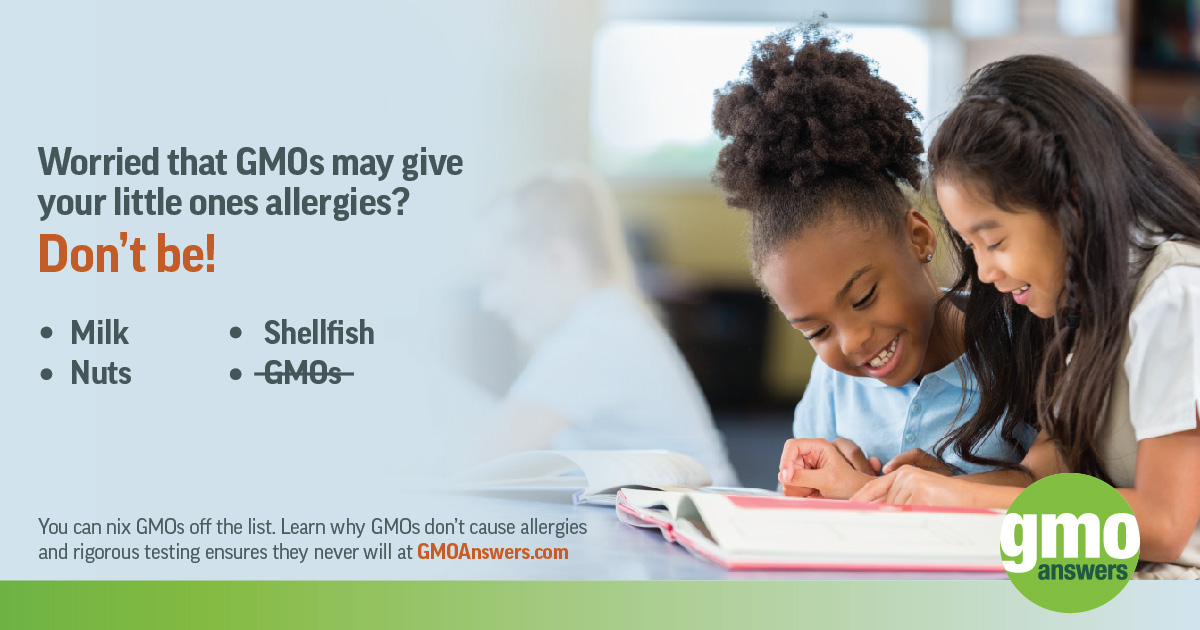4 Ways GMO Answers improved the GMO convo in 2017
This post was originally published on GMO Answers' Medium page.

GMO Answers is dedicated to answering consumers' questions about genetically modified foods and encourage ongoing conversations about science and biotechnology. In 2017, we introduced more innovative and interactive ways to engage with you about these important topics. This year was filled with a lot of new experiences and several “firsts” that built on our mission to create a much better educational experience.
1. Introduced new platforms, better experience
GMO Answers revamped GMOAnswers.com to offer more multimedia content, enhance the site’s search functionality and provide refreshed educational resources, while continuing to answer any questions related to GMOs and biotechnology. You can now more easily find rich, dynamic content – including videos and interactive tools – that explain the science behind GMOs.
Along with a refreshed website, we relaunched our Medium page, where we’ve featured blog posts from nearly 30 volunteer experts and contributors this year on a wide range of agricultural and scientific topics. Check out our most popular post about the GMO potato!
2. Developed more interactive opportunities
As part of this year’s “Get to Know GMOs Month,” GMO Answers launched its first ever GMO Innovation Contest, an interactive social media video contest! The contest challenged anyone to submit a 15–30 second video answering the question: If you could use biotechnology to solve any food problem around the world, what would it be and why? Following a host of submissions, GMO Answers awarded high school senior Porter Christensen the first place prize for his entry demonstrating how genetically modified, nutritionally-enriched white corn may help solve widespread vitamin A deficiency in East Africa.
Check out highlights from all the participants in our recap video!
On Earth Day this year, GMO Answers wanted to take a deeper look at plant science and biotechnology’s positive impact on agriculture and on farmers, so we hosted our first Facebook Live with volunteer expert and sixth generation Florida farmer Lawson Mozley! Check out his discussion on the technology behind food production.
3. Offered better ways to communicate the basics & benefits of GMOs
Communicating the basics about GMOs is crucial to understanding how your food is grown. Since 2013, GMO Answers' volunteer experts have answered more than 1,400 questions – a level of engagement far beyond what we ever expected. As a more interactive way to answer these questions, we’ve featured some of our volunteer experts in videos discussing GMO basics. Here’s fourth generation, family farmer Katie Pratt explaining what GMOs are and Registered Dietitian Connie Diekman talking about their safety.
In addition to health and safety, GMOs’ impact on the environment has always been a topic of concern among our audience. We addressed these concerns on this year’s World Environment Day, highlighting the release of the 2017 PG Economics study, which found that crop biotechnology has significantly reduced agriculture’s environmental impact and contributed to preserving the earth’s natural resources, while boosting the global economy by allowing farmers to grow more, high-quality crops.
And to show more simply how GMOs benefit the environment, we created a fun, animated video!
4. Dispelled trending GMO myths
Finally, GMO Answers has focused on busting the myths surrounding GMOs. Do GMOs cause a decline in pollinators? No. Is there a difference in nutritional value between GMO and non-GMO foods? No difference. Do GMOs cause allergies? Rest easy because the scientific and academic community concluded that genetically modified crops are safe to eat, have the same nutrition and composition as non-genetically modified crops and have no links to new allergies, cancer, celiac or other diseases.

Understanding the science behind GMOs and searching for the facts is crucial now more than ever as even some of today’s top health news outlets perpetuate fear about GMOs over the facts. As we head into 2018, GMO Answers is strengthening its commitment to fight fearmongering and communicate factual, science-based information about biotechnology, so stay tuned for what’s to come in the New Year!



